Photo
album: "From Singapore toward Bangkok"
Fly
over a photo with the mouse to enlarge it
Click
on a photo to open it in a new window
We
left Hobart, André Santu and me, on March 7th 1968. Our parents had sent from
Paris "open" air tickets to fly from Hobart to Paris with the
following stopovers: Sydney, Singapore, Bangkok, Calcutta, Kathmandu and New Delhi.
Since we will not travel some stages of the journey by plane (Singapore -
Bangkok and Calcutta - Kathmandu), we will try to negotiate, during our journey,
with the travel companies to add the trips Bangkok - Phnom Penh - Bangkok and
Kathmandu - Pokhara - Kathmandu that has not been not possible to buy in Paris.
We arrive in Singapore on March 9th and proceeded, by train, towards Bangkok,
with a few stops in Malaysia and in Thailand.
 |
We leave Singapore by train (third
class) on March 12th morning, we stop on the evening in Kuala Lipis. We
start again on March 14th morning and arrive in the afternoon in Tumpat,
near the Thailand's border. We leave Tumpat on March 16th at 4:30 in the
morning. After a six-hour stop, around noon at Hat Yai (waiting for a
train connection), we arrive at last in Chumphon, on March 17th at 6:45
a.m.. The steam locomotives use wood for their engine (there is a big
amount of cut wood in every station) and trains are very slow (mean
speed, including stops, of about 40 km/h). |
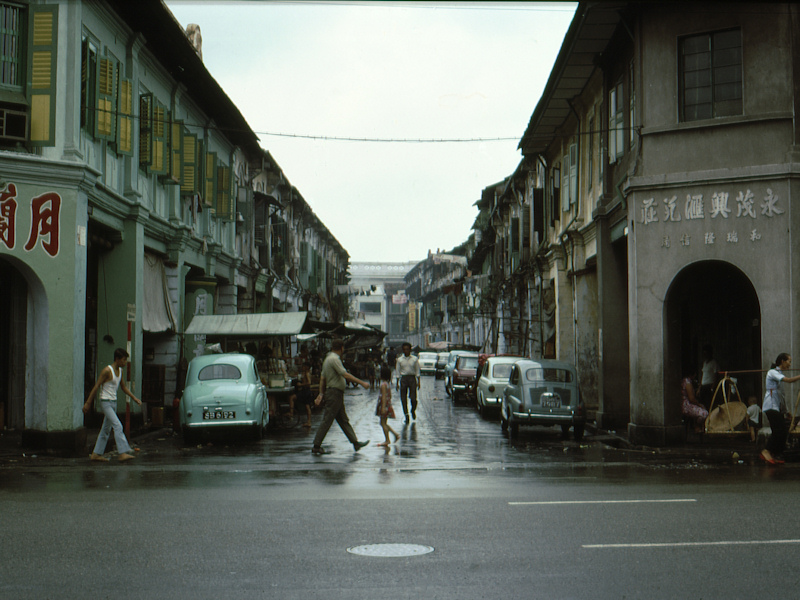 |
Singapore, in Chinatown.
(Nowadays, Singapore has become an ultramodern city, full of
skyscrapers, where it is not possible to throw a bit of paper down on the
pavement without being fined. From Chinatown a unique street is left, full
of souvenir and antiquaries shops) |
 |
Singapore. Sampans along the canal,
used to transport goods and also as floating dwelling places.
(They have also disappeared. Already in 1988, the last time I made a
stopover in Singapore, there was not a single sampan left on the canal) |
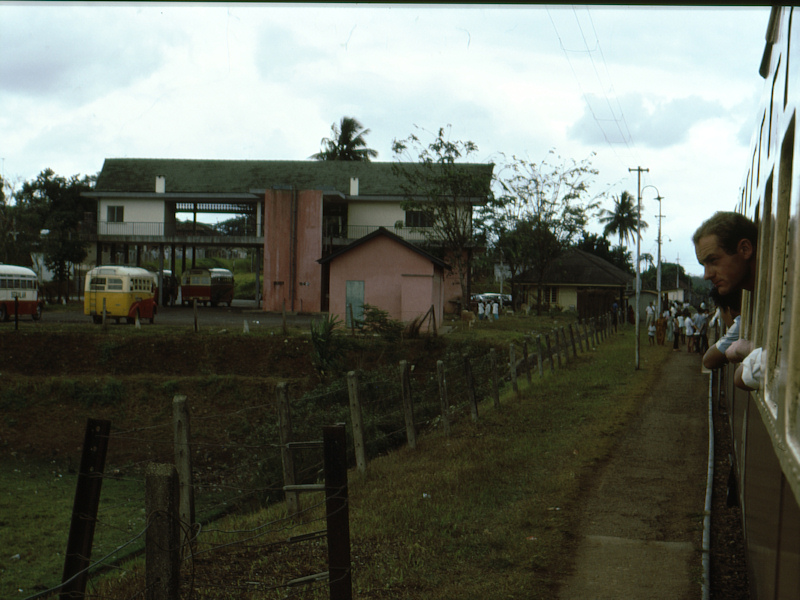 |
In train through Malaysia. Having a
limited budget and also to stay nearer to the local population we travel
in third class. There are wooden seats and no panes at the windows, only
wooden shutters we have the possibility to close. This permits André,
taking the opportunity the train has stopped in a station, to lean out to
look at the surrounding. |
 |
Kuala Lipis. We have left our
rucksacks in a small hotel and we are beginning to walk around to visit
the town when we are surprised by a violent shower. We found cover under
this shelter waiting for the rain to cease. |
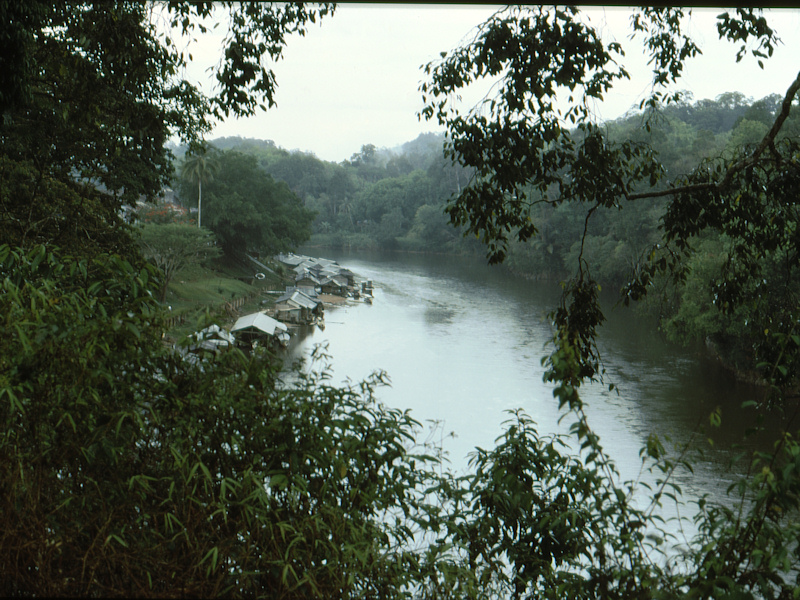 |
The Lipis river which gave its name
to the town Kuala Lipis ("kuala" means confluent). One can see a
great number of habitations on the river bank. |
 |
The habitations on the other bank
of the river are easier to see there. These habitations can float. The sky
will stay cloudy the whole evening, but it will not rain again. The next
day the weather is finer and André will even swim in the river, under the
amused gaze of many children. |
 |
A street in Kuala Lipis. We can see
on this picture representatives of the three principal ethnic groups which
compose the Malaysia's population: the child at foreground is typically of
Malay type, the little girl on the right, behind, is of Chinese type and
the man walking in the back is of Indian type. |
 |
In train between Kuala Lipis and
Tumpat. Along the railway, a forestal exploitation. In the background a
typical limestone hill like the several ones we have seen during this day
of travel. |
 |
Tree trunks ready to be carried away. Exploitation of teak is common
enough in Malaysia, therefore these trunks could be of that variety.
|
 |
A beach at the mouth of a river
near Tumpat. It is very dirty and does not invite to bath. Watching
fishermen push a boat to put it back into water, we learn to count up to
three in Malay and forty years later I still can ear what they repeated so
many times: "Satu! Dua! Tiga!" |
 |
Today, Friday March 15th, is a
feast day in Malaysia where the population is mainly Muslim. We have met
young people and we have spoken to them. I have taken a photo of their
group. They gave us an address where I will be able to sent it, once I
will be back to France. |
 |
I took a second photo with younger
ones. Behind, there are also older people sitting. There is event André
sitting with them. I will send also this photo with the former one. |
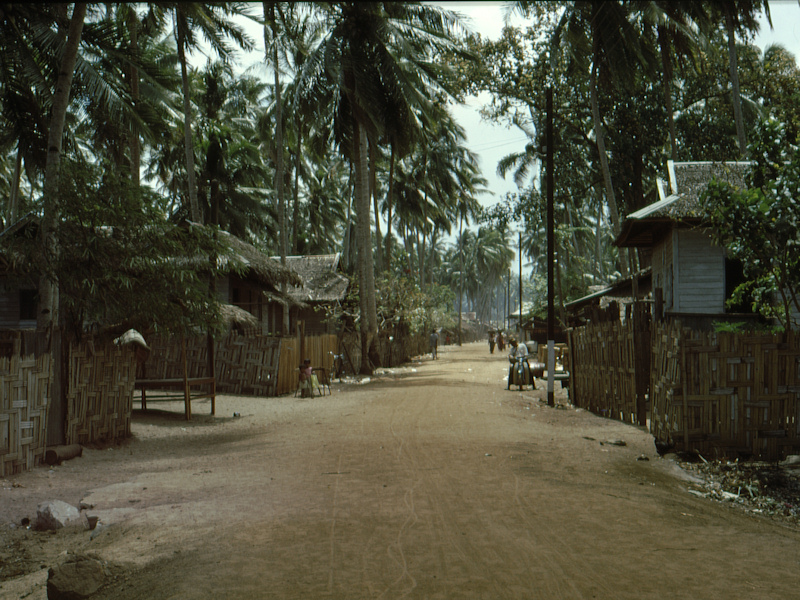 |
A street in the fishers'village
near Tumpat. We thought we were to leave today, Friday, at 4:30 in the
afternoon, but we wrongly read the timetable. It was written 4:30 a.m. and
not 4:30 p.m., therefore we had to wait 12 more hours. We began the night
in the waiting room, then the stationmaster, with whom we had been
speaking for a long while, proposed us to sleep in a railroad car still on
a parking track. We didn't sleep a wink all the time because of the
mosquitoes that literally ate us alive. |
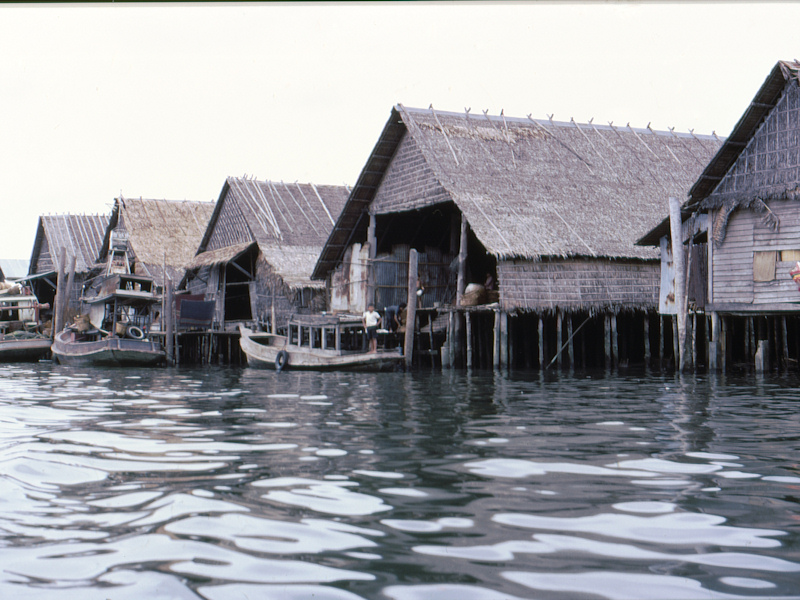 |
We entered Thailand on March 16th,
at 6 in the morning. What stroke us at the beginning was the writing
incomprehensible for us, near to zero signs in English and very few people
who speak this language. After a last stage of 12-hour travel (to cover
500 km), standing, in an overcrowded train, we arrived on March 17th at
6:45 a.m. in Chumphon. We slept the rest of the morning and part of the
afternoon.
The next day, we go by bus to see the beach of Pak Nam Chumphon, 10 km
distant.
In boat, in the mouth of a river, we pass near some warehouses built on
piles. |
 |
We spoke, yesterday with three
Chinese shopkeeper who are studying English. They gave us a beginning of
Thai vocabulary. Numbers and some usual expressions ("Tao rai?":
how much? - "Kup koon": thank you - "Sawat dee": every
kind of greeting). We must learn a minimum of words essential for
surviving far from the main towns.
We arrive to a long sandy beach totally empty. |
 |
Along the beach there are many
coconut palms and a few habitations. |
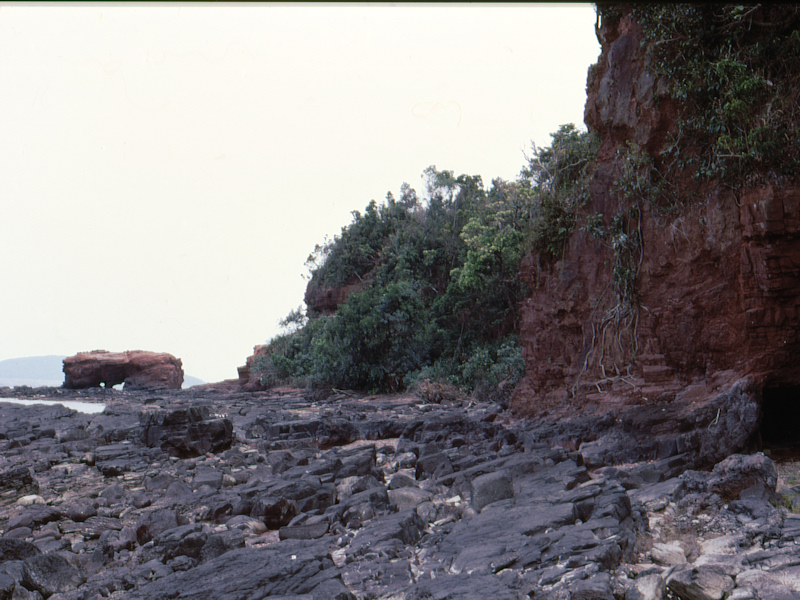 |
A rock barrier seems to end the
beach but, behind, there is another beach even more tranquil. We went for
a swim on that second beach. Later, somebody told us there were snakes on
those beaches. Fortunately, we didn't see any one… |
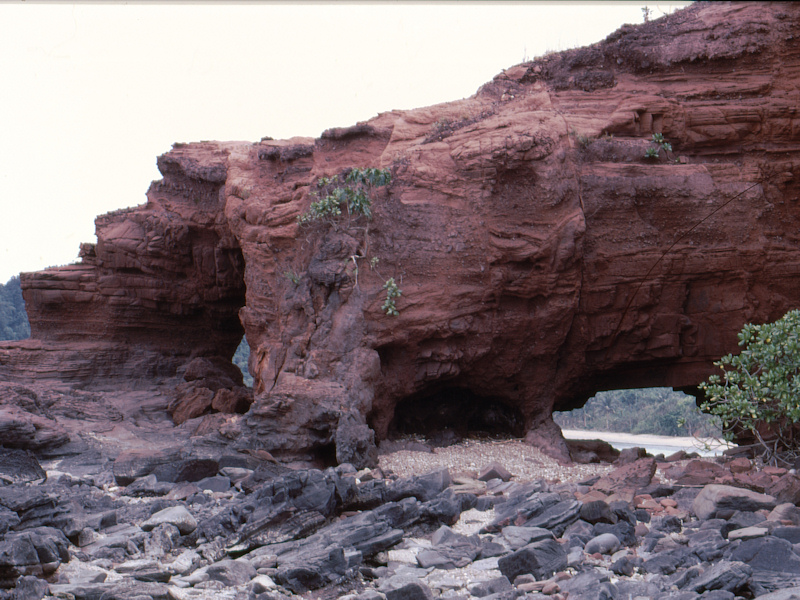 |
The reddish colour of this bored
rock remind me of the laterite* in Central Africa where I spent three
months before leaving to the Antarctica.
(*) Laterite: Sedimentary brick-coloured rock containing iron and
aluminium hydroxides, common in tropical countries. |
Go
back
.
.
.
.
.
.
.





